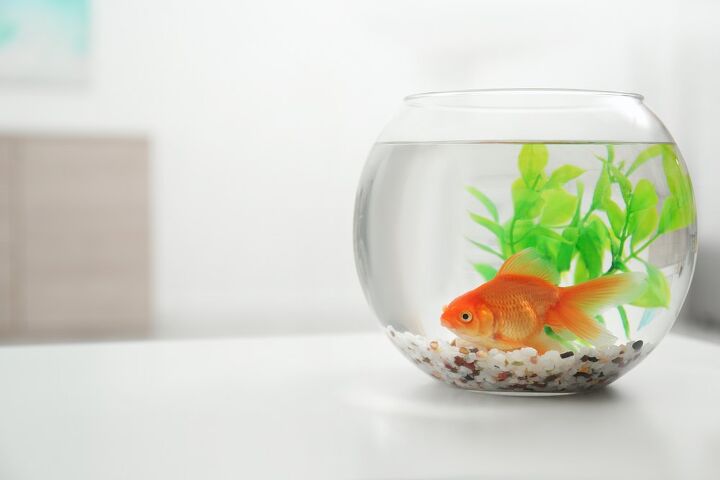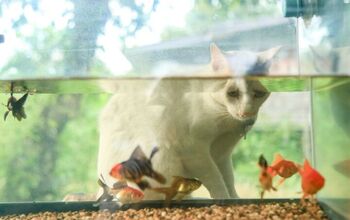How Often Should You Change The Water In A Fish Tank?

It is quite rewarding to look at your fish tank, especially when the fish are healthy. The only downside of having a fish tank is that it requires lots of maintenance. Changing the water isn't fun, but it's necessary. So, how often should you change the water in a fish tank?
You must change the water in a fish tank every 14 days in most cases. Some tanks require water changes once per week, whereas others can go 2-4 weeks without a water change. You can tell it’s time to change the water if it’s cloudy and green, or if the tank is covered in excessive fuzzy algae.
Change the water right away if you see your fish crowded together near the top. That means they are trying to get oxygen because the water quality is too poor. Follow along as we explore how often you should change the water in a fish tank.
How Long Can A Fish Tank Go Without A Water Change?
A fish tank can typically go 15 days without a water change. After that, you run the risk of the tank falling victim to “old tank syndrome”. The name sounds goofy, but old tank syndrome happens when the water in the fish tank contains too much nitrate.
This is dangerous for the fish and plants in the tank. Nitrate is only toxic when the levels are too high, and it happens much quicker in small tanks that are neglected. That’s why it’s important to perform at least a small water change every 15 days.
Ideally, you should change up to 25% of the water in a fish tank. You can charge as little as 10% of the water if it isn’t too cloudy. Small water changes are also fine if the nitrate and pH levels are normal. Some fish tanks only need water changes once every 4 weeks, but that’s quite rare.
How Do You Know If Your Fish Tank Water Is Bad?
Whether it is cloudy water or excessive algae, several things can indicate when the water in the tank is bad. You must pay close attention to the tank to check the conditions are safe for your fish. Let’s look at the most important signs to be aware of so you can maintain healthy water in your fish tank.
Cloudy Or Green Water
The easiest way to tell your fish tank water is bad is to look at the water. Your fish tank should always appear as clear as possible. Cloudy water is a sign that it’s dirty or full of too many macronutrients.
Change at least 10% to 25% of the water in your tank if the water is cloudy. If the water is green, you will likely need to change up to half of it. This is typically caused by phytoplankton, a type of green algae that can spread quickly in a tank.
Besides changing the water, you will also likely need to treat your tank with a UV sterilizer. This simple device can quickly kill algae. Once you’ve killed the algae, simply change the water, and your tank will be as good as new.
Fish Crowding Near The Surface
Have you noticed your fish crowding near the surface of the water? If so, then that’s a sign they aren’t getting enough oxygen and have become desperate. Overly dirty fish tank water typically doesn’t contain enough oxygen for the fish.
The water near the surface may stay rich in oxygen even if the rest of the water is lacking. Your tank can also lack oxygen if you fill it with too many fish. If your tank is dirty and lacks oxygen, you must do a large water change.
In some cases, you may need to change up to 50% of the water to restore as much oxygen as possible. This can be time-consuming, but it’s worthwhile to protect your fish and give them a safe home.
Excessive Fuzz Algae
Fuzz algae in your fish tank is quite normal, that is unless it gets out of hand. Excessive fuzz algae can be bad for your fish tank, but it’s easy to manage. The easiest way to cut down on fuzz algae in a fish tank is to reduce the iron level.
Avoid water treatments that contain lots of iron as that can encourage fuzz algae growth. It also helps to reduce the amount of light that shines into your fish tank.
Unusual Behavior
Are your fish acting differently than usual? Unusual behavior in a fish tank is a clear sign that something is wrong with the water in many cases. This is especially true if all the fish are behaving strangely and it’s not just an isolated incident.
For example, you can tell something is wrong if several of your fish are suddenly lethargic. Another sign that your water is bad is that your fish refuse to eat. In some cases, this is simply due to the water temperature. However, you can tell it’s due to the water conditions if the pH levels are off and the water is cloudy.
Your Fish Are Dying
Have some of your fish recently died? If so, it could be a sign that the water in your tank is dirty and unsafe for fish. It’s important to check the water’s bacteria and pH levels if a fish dies unexpectedly .
This will tell you if it was a random incident or a fixable problem related to the water conditions. Never ignore this or take the dead fish out and carry on as usual. You can turn the problem around and protect the rest of the fish in your tank if you regularly test and change the water.
What Happens If You Don’t Change The Water In A Fish Tank?
Sadly, your fish can die if you don’t regularly change the water in a fish tank. That’s especially true if you recently bought new fish for your tank. It takes fish some time to get used to the water and environment in your tank.
New fish will struggle to adapt to dirty tanks and sadly won’t live for long. The fish that you’ve had for a long time are more likely to adapt to dirty water in a tank. That said, just because they’re more resilient doesn’t mean you should wait longer than 2 weeks to change the water.
Nitrate levels will rise to a dangerous level after 2-4 weeks without a water change. The pH levels will plummet as well, and the bacteria levels in the tank will become dangerous. Never neglect your fish tank, or the water will become uninhabitable and the fish will die.
How Many Fish Can Be In A 10-Gallon Tank?
You can keep up to 8 fish in the average 10-gallon tank. However, you may only want to put 6 fish in the tank to play it safe. Keep as few fish as possible in your 10-gallon tank if you plan to fill it with plants as well.
Fish sadly struggle to get oxygen when there are too many fish and objects in a small tank. Not only is it harder to clean the tank, but your fish will also have a poor quality of life if they’re overcrowded.
How many fish you can fit in a 10-gallon tank also varies based on how big they are. For example, you could easily fit 8 small fish in a 10-gallon tank. However, you can likely only keep 4-6 medium or large-sized fish in the same tank.
Summing It Up
You should change the water in your fish tank every 2 weeks or sooner if the water is cloudy or green. Some people can wait up to 4 weeks to change the water, but that is quite risky. Change the water in your fish tank right away if the water is cloudy or green. It’s also important to change the water by up to 50% if you notice your fish are gasping for air at the top of the tank.
Related Guides:

Nick Durante is a professional writer with a primary focus on home improvement. When he is not writing about home improvement or taking on projects around the house, he likes to read and create art. He is always looking towards the newest trends in home improvement.
More by Nick Durante



























